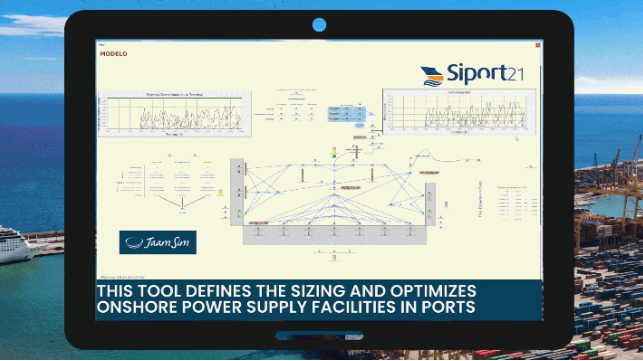Siport21 Develops Simulator for Evaluating Cost-Benefit & Carbon Footprint

[By: Siport21]
The electrification of ports should be a reality in the European Union by 2030. It is therefore necessary to invest in infrastructure able to supply power to the moored vessels so that they can switch off their auxiliary engines, decreasing the greenhouse gas emissions.
To achieve this, the European Union ports must implement OPS (Onshore Power Supply) technology to permit the vessel connection to the electricity grid. This system must ensure sufficient shore-side electrical power to meet a high percentage of demand based on their average annual throughput of container ships, passenger ships, and ro-ro vessels.
These installations require a large investment. For this reason, it is essential to accurately establish the need for energy. Siport21 has recently developed a methodology to define the sizing and optimize OPS facilities in ports. The results of a practical case were presented in Marlog 13 “The International Maritime Transport and Logistics Conference”, organized by the Arab Academy for Science, Technology and Maritime Transport in Alejandria (Egypt).
The simulator provides an estimate of hourly power demand over the course of a year associated with probability levels. This methodology will help ports to have probability-based estimates and their seasonal distribution. It will therefore be essential for decision- making, evaluating the cost-benefit of the investment to be made and the total power to be installed. In addition, the tool also shows the results of the decrease in carbon footprint in the port due to the operation of the OPS.
The products and services herein described in this press release are not endorsed by The Maritime Executive
No comments:
Post a Comment